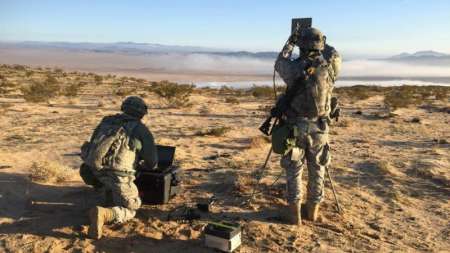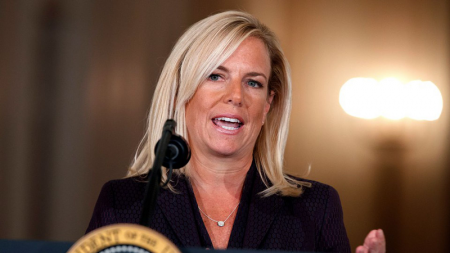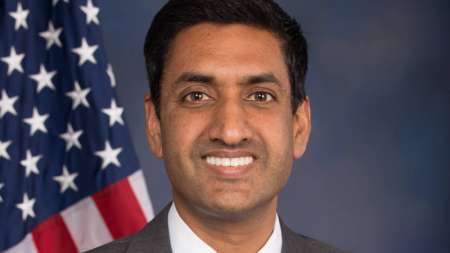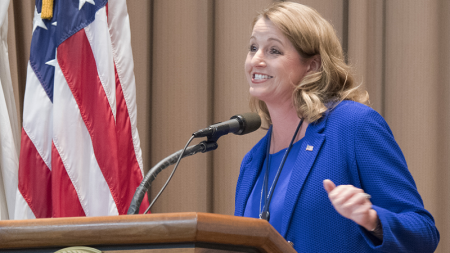A new report from the Government Accountability Office (GAO) this week raises concerns that the National Aeronautics and Space Administration (NASA) isn’t properly protecting its IT systems. The agency spends about $1.5 billion annually on IT investments to support its missions. […]
The Senate Committee on Commerce, Science, and Transportation today approved S. 2418, the Rural Reasonable and Comparable Wireless Access Act of 2018. […]
A challenge many Federal managers face as they embark on IT modernization initiatives is how to identify and strategically prioritize systems for IT modernization in a way that helps them further their mission. […]
As part of its accelerated push toward commercial cloud services, the Defense Department has ordered more than 100 data centers in what DoD calls its “Fourth Estate” agencies to migrate their applications to milCloud 2.0, a commercially run cloud hosted by the Defense Information Systems Agency (DISA). […]
Artificial Intelligence systems are known for getting results with compute-intensive analytics involving huge data sets and a lot of processing power. But it turns out they also can help users do more with less. […]
An official with data storage technologies provider Pure Storage told MeriTalk that issues holding back Federal government adoption of artificial intelligence (AI) technologies include the high cost of super-computing resources and the continued reliance of government agencies on legacy IT systems that were not created with AI applications in mind. […]
Advances in hybrid cloud environments and specialized vendor offerings in the space have led to a dramatic shift in the way Federal agencies are planning and executing their cloud migration agendas, according to a private sector leader and government official involved in Federal cloud procurements. […]
The House Subcommittee on Digital Commerce and Consumer Protection met today to discuss the emerging field of quantum computing, and how the still-nascent sector requires more attention in terms of funding and human capital. […]
The Department of Justice (DoJ) announced today that a Federal jury convicted Ruslans Bondars, a resident of Latvia, on three counts related to his operation of “Scan4you,” an online counter-antivirus service. […]
The White House’s planned advisory committee on artificial intelligence may or may not help keep the country at the forefront of technological innovation, but it is another sign that the government is getting more serious about the importance of AI and the potential threats of falling behind in the “AI arms race.” […]
The Federal government has a massive data center footprint: 6.76 million square feet, to be precise. Of its total portfolio, an astonishing 62 percent of all floor center space goes unused. To add insult to injury, it’s extremely expensive to maintain all that unused space. […]
Immediately following National Security Advisor John Bolton’s decision to eliminate the post of one of the President’s top cybersecurity advisors, lawmakers pushed back with legislation aimed at reinstating the position and requiring Senate confirmation for it under a newly established National Office for Cyberspace. […]
Federal data center teams will have a new member suiting up this summer to help drive efficiency and optimization. And this team member doesn’t take vacations or lunch breaks. […]
Department of Homeland Security (DHS) Secretary Kirstjen Nielsen emphasized at a Senate Homeland Security and Governmental Affairs Committee hearing this week the importance of shoring up United States cyber defenses, and said that effort would be helped by adequate funding and reorganization of a key DHS department. […]
Improving user experience on Federal websites so that they rival leading private sector sites requires a better allocation of government resources rather than significant new cash outlays, said Rep. Ro Khanna, D-Calif., during a press gathering at Adobe’s Digital Government Symposium in Washington on Tuesday. […]
A challenge for many Federal agencies–and organizations in general–when moving to the cloud is understanding all the options, and identifying the best solutions to meet strategic, security, and mission requirements. […]
This month marks the first anniversary of President Trump signing his cyber executive order (EO), formally titled the Presidential Executive Order on Strengthening the Cybersecurity of Federal Networks and Critical Infrastructure. […]
The Department of Homeland Security (DHS) today unveiled a new five-pronged strategy aimed at managing “national cyber risk,” and in particular, U.S. “cyber and critical infrastructure security.” […]
John Bolton, President Trump’s national security adviser, has eliminated the White House cybersecurity coordinator position. […]
User-centered, citizen-based design must be at the heart of government technology initiatives in the next decade, and diversity at the decision-making table must inform the outcome of those efforts, said Federal CIO Suzette Kent. […]
How do you spell the future of government IT? AI. While that’s not going to get you too many points on the triple word score in Scrabble, the technology and applications will unscramble massive dividends in cost savings, service enhancements, and breakthroughs. […]
Government and industry experts told members of the House Subcommittee on Research and Technology yesterday that blockchain technology pilots and trials are yielding promising results for supply chain and government operations applications. […]
In a previously announced move, the Pentagon elevated the U.S. Cyber Command to a full unified command. This reflects the universal role cyber operations–and potential cyber threats–have come to play across the range of military activities, and how relatively quickly virtual technologies have changed the game. […]
In a move that will help save the Federal government $695 million over the next 10 years, the Defense Information Systems Agency (DISA) is “reshaping and reorganizing [its] Computing Ecosystem.” The first part of the reorganization is shuttering the doors of its St. Louis data center. […]
As debate swirls around the Department of Defense’s (DoD) multibillion dollar Joint Enterprise Defense Infrastructure (JEDI) cloud acquisition, the department’s push toward commercial cloud services is continuing on other fronts. […]
A new study finds that the public is warming up to the use of biometric identification technology, but remains wary of tracking applications and is looking to government to set standards in that area. […]
Seventy percent of energy industry professionals are concerned that a successful cyberattack against energy or oil and gas companies could cause a catastrophic failure, according to a survey released Wednesday. […]
A bill introduced in the House on Thursday would create a series of minimum functionality and security requirements for all Federal government agency public-facing websites and digital services. […]
While members of Congress discussed the nationwide technical skills gap at a hearing on Wednesday, tech-industry advocates on Capitol Hill looked for ways to reduce the cybersecurity sector’s gender gap. […]
The White House said on Thursday that it will create a new artificial intelligence (AI) advisory committee–dubbed the Select Committee on Artificial Intelligence–that will advise the White House on AI research and development efforts in government and industry. […]





















